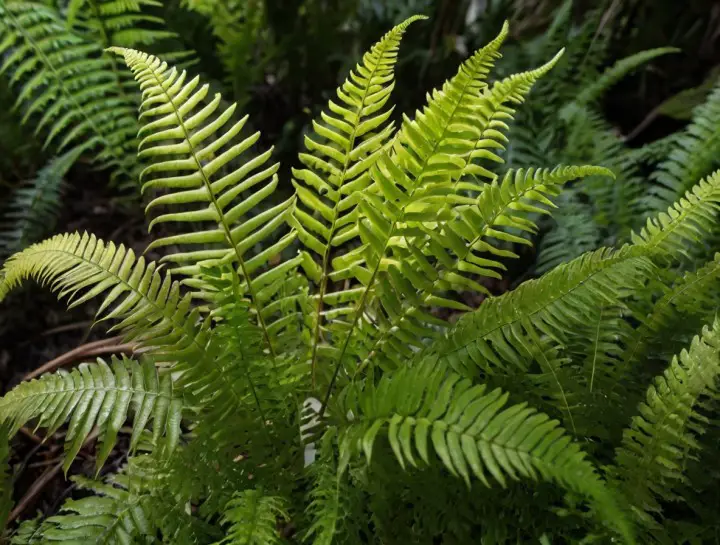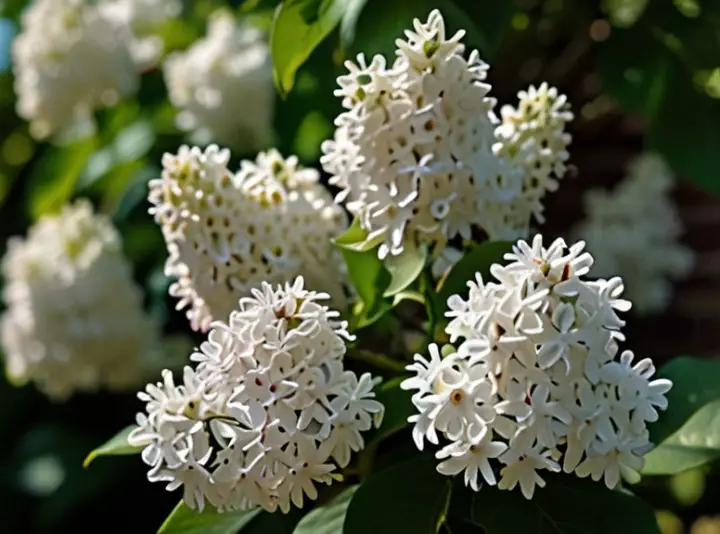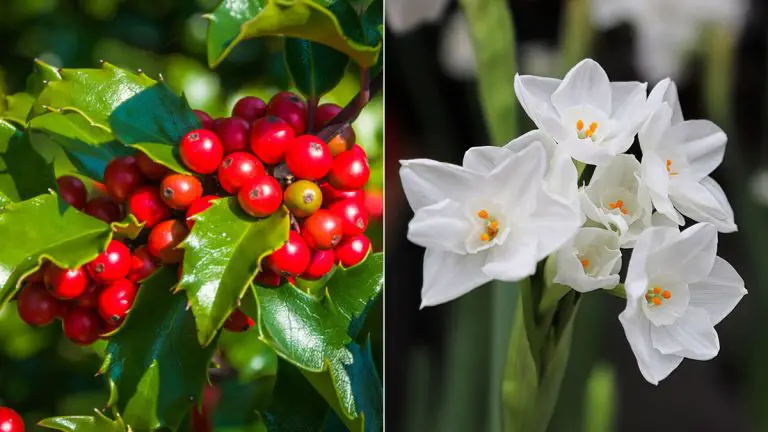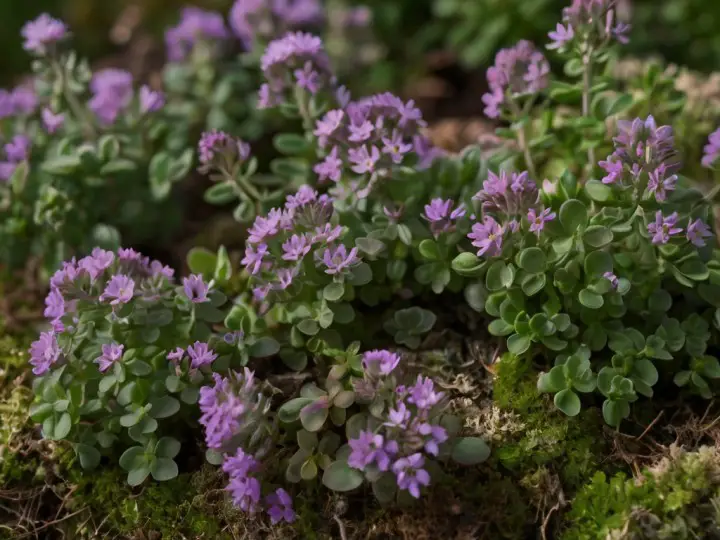Tiny Black Bugs Look like poppy seeds | PRO Information
Introduction
In the realm of pest identification, tiny black bugs that resemble poppy seeds can be particularly perplexing. These diminutive creatures can invade homes, gardens, and other environments, causing concern and confusion. In this comprehensive guide, we will delve into the various types of tiny black bugs that might be mistaken for poppy seeds, their characteristics, habitats, and effective management strategies.
Types of Tiny Black Bugs
1. Springtails
Springtails are tiny, wingless insects that are often found in moist environments. Measuring less than 1/16 inch in length, these bugs can appear black or dark gray, leading to their mistaken identity as poppy seeds. They are known for their unique ability to jump great distances relative to their size.
Characteristics:
- Size: Less than 1/16 inch
- Color: Black, dark gray, or brown
- Habitat: Moist areas, soil, decaying organic matter
Management:
- Reduce moisture levels in affected areas
- Improve ventilation in basements and bathrooms
- Use dehumidifiers to maintain dry conditions
2. Fungus Gnats
Fungus gnats are small, dark insects that can be found around indoor plants. The adults are often mistaken for poppy seeds due to their size and color. The larvae feed on fungi and organic matter in the soil, which can damage plant roots.
Characteristics:
- Size: Adults are about 1/8 inch
- Color: Dark brown to black
- Habitat: Indoor plants, soil rich in organic matter
Management:
- Allow the soil to dry between waterings
- Remove decaying plant material from the soil surface
- Use sticky traps to capture adult gnats
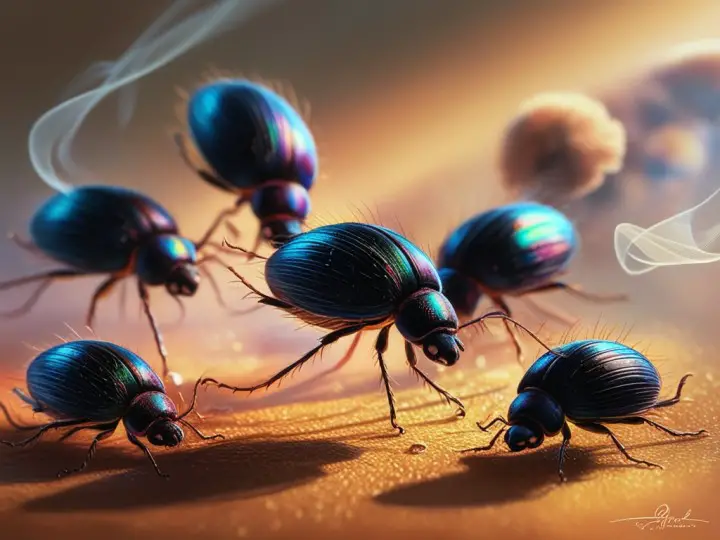
3. Carpet Beetles
Carpet beetles are another group of tiny black bugs that can resemble poppy seeds. These pests are notorious for damaging fabrics, carpets, and stored products. The larvae are particularly destructive, feeding on natural fibers.
Characteristics:
- Size: Adults are about 1/8 to 1/4 inch
- Color: Varied, often with dark patterns
- Habitat: Fabrics, carpets, stored products
Management:
- Regularly vacuum carpets and upholstered furniture
- Store clothes and textiles in airtight containers
- Use insecticides specifically designed for fabric pests
4. Clover Mites
Clover mites are tiny red or black bugs that can sometimes be mistaken for poppy seeds. These mites often invade homes in large numbers, especially during the spring and fall. They do not pose a threat to humans or pets but can be a nuisance.
Characteristics:
- Size: Less than 1/30 inch
- Color: Red, black, or brown
- Habitat: Lawns, gardens, home exteriors
Management:
- Seal cracks and gaps in windows, doors, and foundations
- Keep vegetation trimmed away from the house
- Use a barrier treatment around the perimeter of the home
5. Booklice
Booklice, also known as psocids, are tiny insects that can be found in damp, warm environments. These bugs can sometimes be mistaken for poppy seeds due to their small size and dark coloration. They feed on mold and mildew, often found in books, papers, and stored foods.
Characteristics:
- Size: Less than 1/16 inch
- Color: White to dark gray or black
- Habitat: Damp, warm areas, books, papers, stored foods
Management:
- Reduce humidity levels in affected areas
- Store books and papers in dry, cool environments
- Clean and dry food storage areas regularly
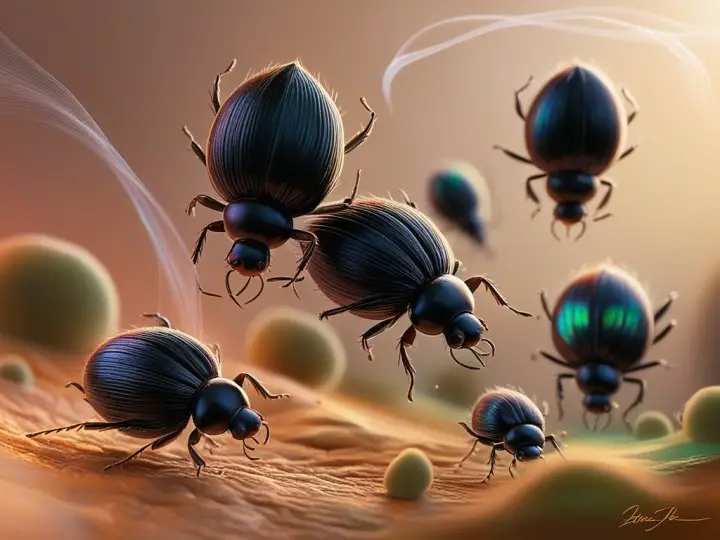
Habitats and Environmental Factors
Moisture and Humidity
Many of the tiny black bugs that resemble poppy seeds thrive in moist, humid environments. Areas with high moisture levels, such as basements, bathrooms, and kitchens, are particularly susceptible to infestations. Maintaining proper ventilation and using dehumidifiers can significantly reduce the presence of these pests.
Organic Matter
Organic matter, including decaying plant material, mold, and mildew, serves as a primary food source for many tiny black bugs. Ensuring that such materials are promptly removed and disposed of can help mitigate infestations.
Cracks and Crevices
Small cracks and crevices in buildings provide ideal hiding spots for tiny black bugs. Regularly inspecting and sealing these entry points can prevent pests from invading indoor spaces.
Preventive Measures
Regular Cleaning
Routine cleaning is crucial in preventing and managing infestations of tiny black bugs. Vacuuming carpets, upholstered furniture, and floors can remove potential food sources and hiding places.
Proper Storage
Storing food, fabrics, and papers in airtight containers can deter pests from accessing these materials. Regularly inspecting stored items for signs of infestation is also important.
Ventilation and Dehumidification
Improving ventilation in damp areas and using dehumidifiers can create inhospitable conditions for moisture-loving pests. Ensuring that areas like basements and bathrooms are dry can significantly reduce pest populations.
Conclusion
Tiny black bugs that resemble poppy seeds can be a significant nuisance, invading homes and causing damage to plants, fabrics, and stored goods. By understanding the characteristics and habitats of these pests, and implementing effective management and preventive measures, we can successfully mitigate their impact. Maintaining a clean, dry, and well-ventilated environment is key to preventing infestations and ensuring a pest-free home.




